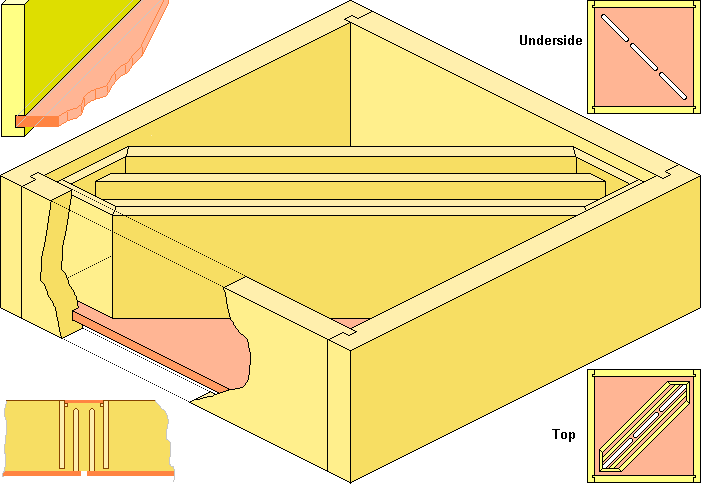The standard Miller bee feeder has its feeding station centrally located and perpendicular to the sides, which divides the feed area into two roughly equal volumes. As hives are never totally level this causes a slight residue of feed to be left after use. This is a nuisance as the feed may ferment and cause extra work in cleaning up feeders. This version has the feeding station situated diagonally which gives two distinct advantages, a one piece feed volume and a longer length for the feeding station itself.
Another feature which I am not sure is an advantage or disadvantage is that, as the hive is square, the diagonal path encompasses almost every frame in the box below (which may shorten the path that bees need to follow in transporting the feed). Whereas the standard type will align across the frames or along the central frame according to how it is placed on the hive.

The one illustrated above is for a National type hive and is 460 mm square. Other hive types are not square, but the principle involved can still be used. It is wise to have a small single bee space notch in the bottom run of the outer skirt so that bees can enter the main feed chamber when it is almost empty so that they may clear up the last few drops of syrup.
The wooden pieces that form the chevron shaped ends are firmly fixed and sealed, but the outer baffles have a small gap underneath (3 mm) for the feed to flow under.
The feeding station has a plywood cover over it, (shown in the cross section), that is not shown in the main drawing above.
I have never seen one of these diagonal feeders and if they were ever manufactured it may have been by Apex Enterprises that Dave Cushman ran. R.P.